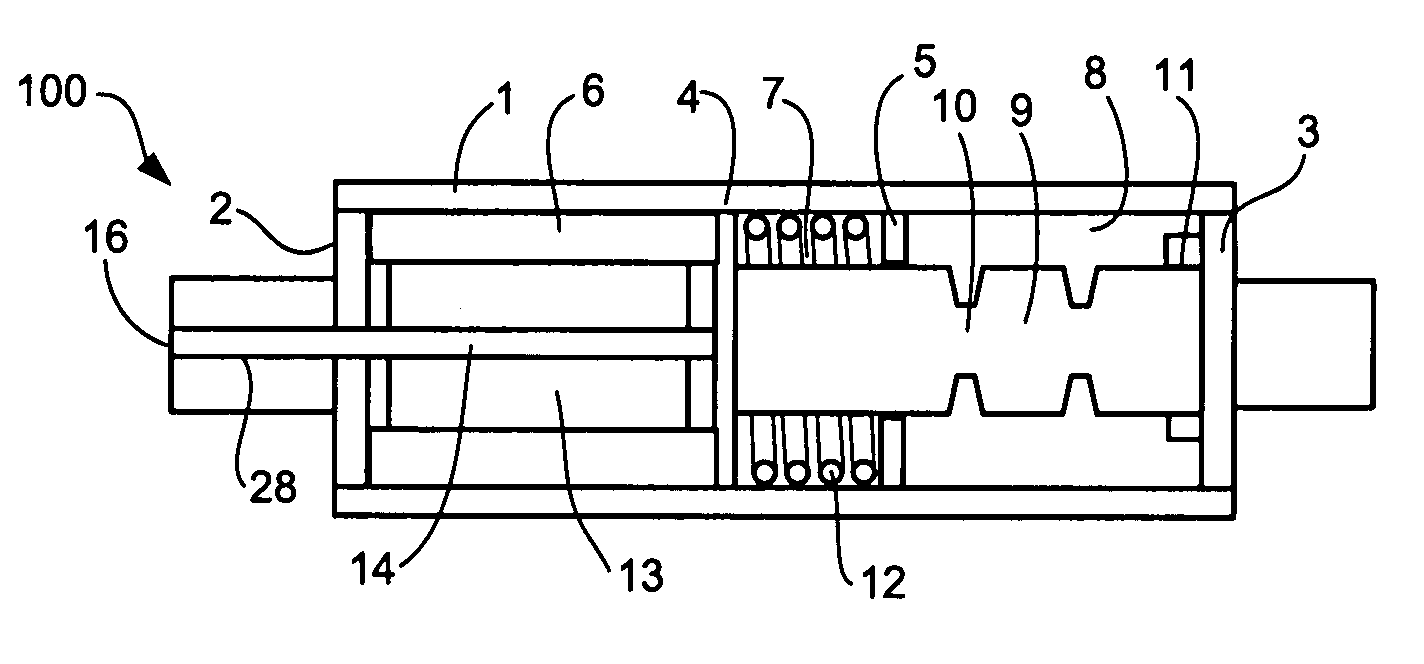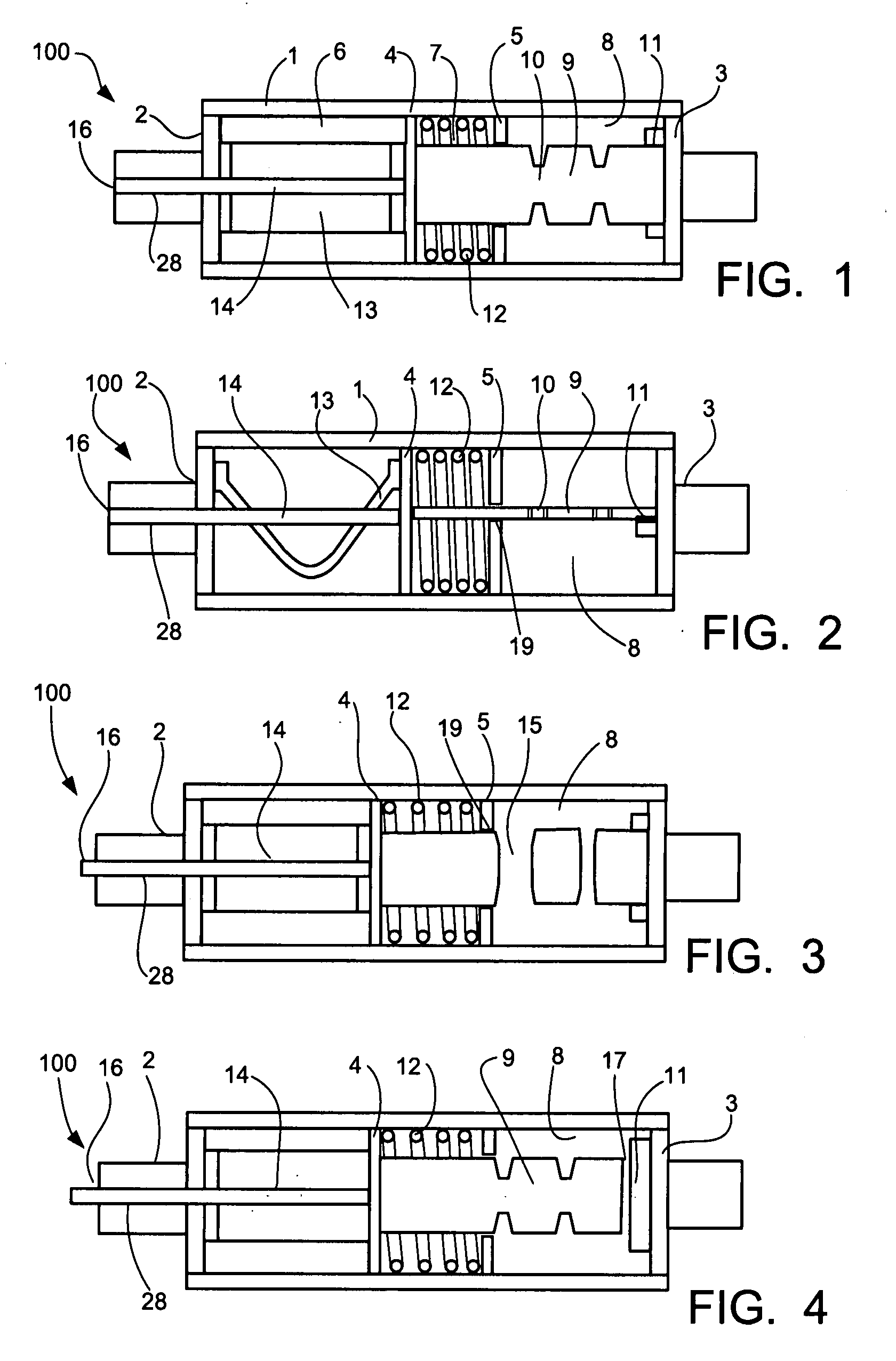Fuse providing circuit isolation and visual interruption indication
a circuit isolation and visual interruption technology, applied in the direction of protective switch operation/release mechanism, protective switch details, etc., can solve the problems of high current, insufficient high voltage fuses, and difficult manufacturing, etc., to achieve the effect of high curren
- Summary
- Abstract
- Description
- Claims
- Application Information
AI Technical Summary
Benefits of technology
Problems solved by technology
Method used
Image
Examples
Embodiment Construction
[0033]The significance of the present invention will be best understood by a description of the sequence of events when the device is subjected to both high and low currents.
[0034]Referring first to FIGS. 1 and 2, the fuse 100 of the present invention generally includes an elongate, insulative, non-conducting housing 1 closed at its opposite ends with two conductive terminals 2 and 3, which are electrically connected to a power circuit. A movable partition 4 and a fixed partition 5 divide the interior of the housing 1 into three sections. First section 6 extends between movable partition 4 and the first terminal 2, second section 7 extends between the movable partition 4 and the fixed partition 5 and third section 8 extends between the fixed partition 5 and the second terminal 3.
[0035]The movable partition 4 is made of an electrically conductive material and is generally in the form of a piston-type element, which is able to slide within the interior space of the housing 1. Fixed to...
PUM
 Login to View More
Login to View More Abstract
Description
Claims
Application Information
 Login to View More
Login to View More - R&D
- Intellectual Property
- Life Sciences
- Materials
- Tech Scout
- Unparalleled Data Quality
- Higher Quality Content
- 60% Fewer Hallucinations
Browse by: Latest US Patents, China's latest patents, Technical Efficacy Thesaurus, Application Domain, Technology Topic, Popular Technical Reports.
© 2025 PatSnap. All rights reserved.Legal|Privacy policy|Modern Slavery Act Transparency Statement|Sitemap|About US| Contact US: help@patsnap.com



